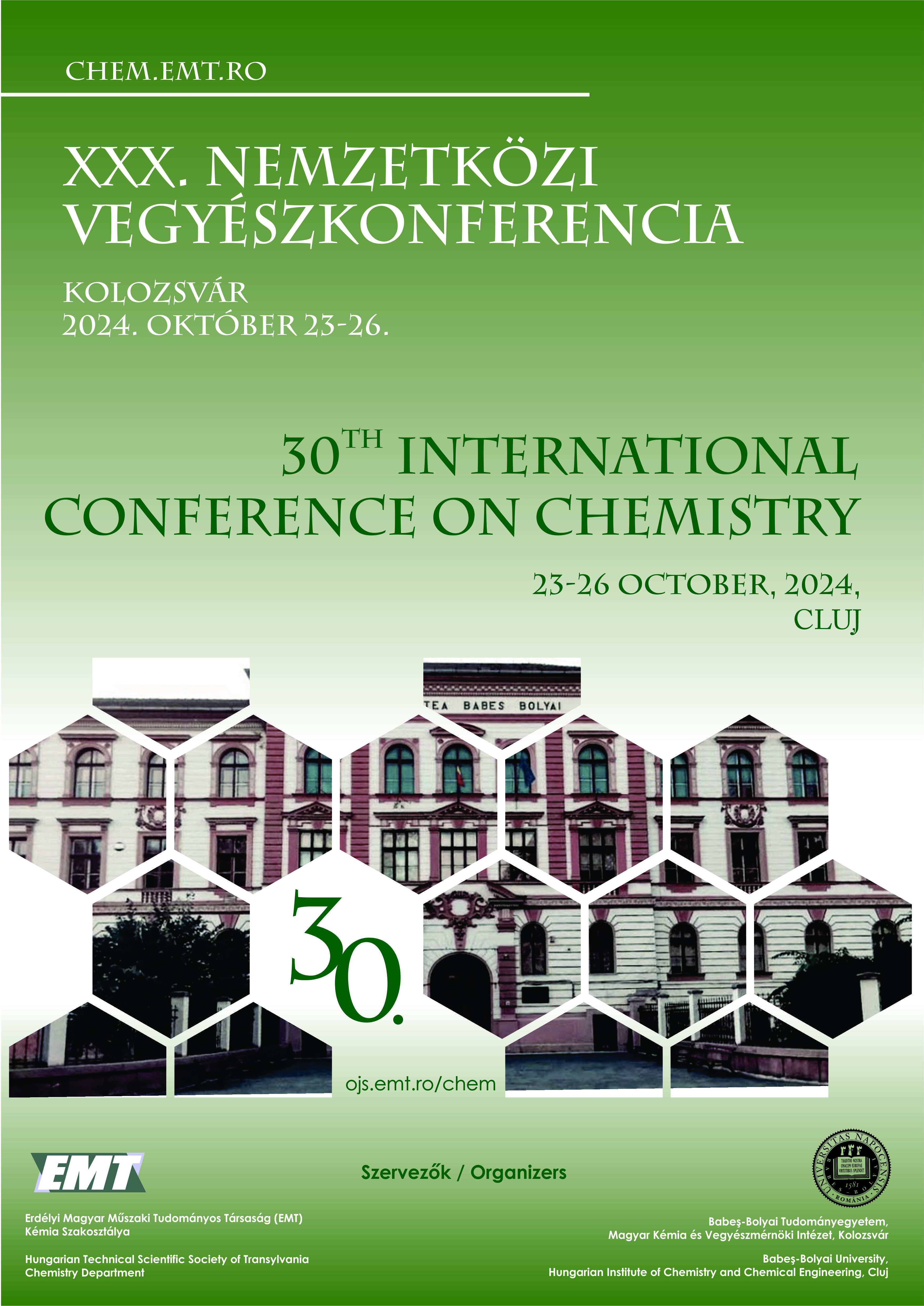Az akvakobalamin klorittaduktuma: kontraszt a klorit-diszmutazzal
The chlorite adduct of aquacobalamin: contrast with chlorite dismutase
Keywords:
chlorite, cobalamin, DFT, /, klorit, kobalaminAbstract
In the reaction of aquacobalamin (aquaCbl) with chlorite, a stable species is detected and assigned as a Co(III)-chlorite. Its UV-vis spectrum is almost identical to that of aquaCbl, except for some minor differences at ~430 nm; cyanide can eliminate and prevent these changes. The 1H-NMR spectra reveal strong influences of chlorite on the B2 and B4 protons of the cobalt-bound dimethyl benzimidazole ligand. Together, the UV-vis and NMR titrations suggest a Kd of 10 mM or higher for chlorite on Cbl. Resonance Raman spectra reveal minor changes in the spectrum of aquaCbl to chlorite – as well as a disappearance of the free chlorite signals, consistent with Cbl-chlorite complex formation. Corroboration for these interpretations is also offered from mass spectrometry and DFT calculations. This Co(III)-OClO- complex would be a stable analogue of the first reaction intermediate in the catalytic cycle of chlorite dismutase, or in the reaction of chlorite with a number of other heme proteins. The differences in reactivity between Co(III) cobalamin and Fe(III) heme towards chlorite are analyzed and rationalized, leading to a reconciliation of experimental and computational data for the latter.
ÖSSZEFOGLALÓ
Az akvakobalamin (aquaCbl) klorittal való reakciója során egy stabil faj azonosítására kerül sor, melyet Co(III)-kloritknak neveznek. UV-vis spektruma majdnem azonos az aquaCbl-éval, néhány kisebb eltérést leszámítva, mely ~430 nm-en megfigyelhető; a cianid kiküszöbölheti és megakadályozhatja ezeket a változásokat. Az 1H-NMR spektrumok rámutatnak a klorit erős hatására, melyet a kobalthoz kötött dimetil-benzimidazol ligandum B2 és B4 protonjaira gyakorol. Az UV-vis és NMR titrálások együttesen 10 mM vagy magasabb Kd-értéket jeleznek a Cbl-n lévő klorit esetében. A rezonancia Raman-spektrumok kisebb változásokat tárnak fel az aquaCbl klorittá alakuló spektrumában – valamint a szabad klorit jelek eltűnését, ami összhangban van a Cbl-klorit komplex képződésével. Ezeket az értelmezéseket tömegspektrometriás és DFT-számítások is alátámasztják. Ez a Co(III)-OClO komplex stabil analógja lenne a reakció első köztes termékének a klorit-diszmutáz katalitikus ciklusában, vagy a klorit reakciójában számos más hem fehérjével. A Co(III) kobalamin és a Fe(III) hem klorit irányában mutatkozó reaktivitási különbségek elemzésére valamint racionalizálására kerül sor, ami a kísérleti és számítási adatok egyeztetéséhez vezet.


